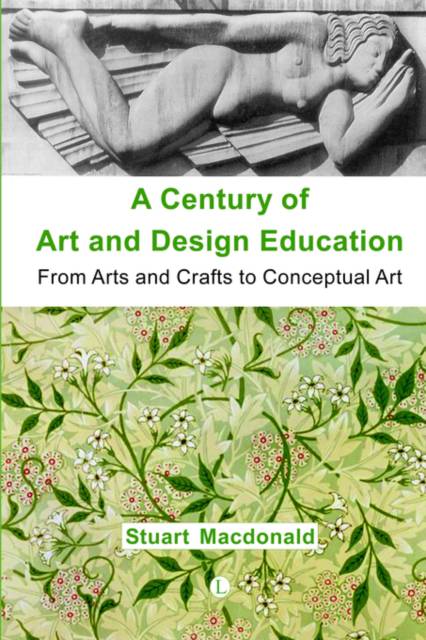
- Afhalen na 1 uur in een winkel met voorraad
- Gratis thuislevering in België vanaf € 30
- Ruim aanbod met 7 miljoen producten
- Afhalen na 1 uur in een winkel met voorraad
- Gratis thuislevering in België vanaf € 30
- Ruim aanbod met 7 miljoen producten
Zoeken
A Century of Art and Design Education
From Arts and Crafts to Conceptual Art
Stuart MacDonald
Paperback | Engels
€ 37,95
+ 75 punten
Omschrijving
A fascinating and rigorously researched account of the ideas and influence of the artists and teachers who brought about the major advances in national art education during the nineteenth and twentieth centuries. The outstanding artists to whom the Author gives special attention are: Walter Crane, C.R. Ashbee, R. Catterson-Smith, W.R. Lethaby, Fred Burridge and Fra Newbery. These adherents of Morris believed in the unity of the arts and crafts and in one of the central tenets of the Arts and Crafts movement: namely, that work should represent pleasure, rather than a resented duty. Furthermore, the same disciples insisted upon the students working from memory, as well as from life; together these approaches brought impressive gains for visual education. This highly informative work examines each follower of the movement in turn and also looks at the role played by progress in Glasgow. The book concludes by confronting the dilemma faced by teachers of art and design, which has arisen from the contemplationof the ideas of Sir Herbert Read and the promoters of Conceptual Art.
Specificaties
Betrokkenen
- Auteur(s):
- Uitgeverij:
Inhoud
- Aantal bladzijden:
- 240
- Taal:
- Engels
Eigenschappen
- Productcode (EAN):
- 9780718830489
- Verschijningsdatum:
- 1/12/2005
- Uitvoering:
- Paperback
- Formaat:
- Trade paperback (VS)
- Afmetingen:
- 156 mm x 234 mm
- Gewicht:
- 344 g

Alleen bij Standaard Boekhandel
+ 75 punten op je klantenkaart van Standaard Boekhandel
Beoordelingen
We publiceren alleen reviews die voldoen aan de voorwaarden voor reviews. Bekijk onze voorwaarden voor reviews.








